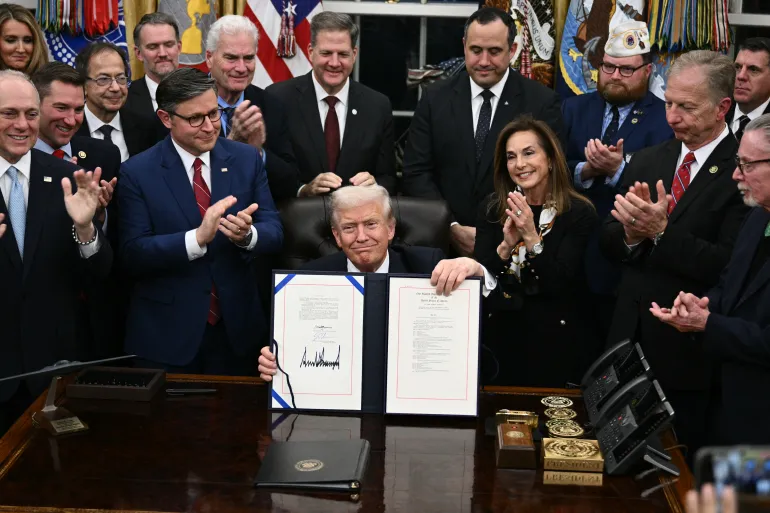President Donald Trump has signed a long-awaited federal spending bill into law, officially ending the longest government shutdown in American history after 43 days of funding paralysis.
The bill passed the Republican-led House of Representatives late Wednesday evening in a narrow 222–209 vote, with six Democrats breaking party lines to support it. Trump signed the legislation within two hours of the House vote, remarking from the Oval Office, “With my signature, the federal government will now resume normal operations.”
Shutdown Paralyzed Federal Operations
The shutdown, which began on October 1, halted all non-essential government functions, leaving 670,000 civil servants furloughed and another 670,000 working without pay. It caused widespread disruptions in services, particularly in air travel, food aid programs, and federal agencies handling health and housing assistance.
Airlines and airports reported staffing shortages, delayed routes, and increased flight cancellations. Millions of American families relying on government assistance also faced delays in benefits, sparking public outcry and economic concern ahead of the busy holiday season.
The bill provides funding through January 30, 2026, giving lawmakers less than three months to reach a more permanent solution and avoid another potential shutdown.
Political Fallout and Lingering Tensions
The battle over funding reflected deep partisan divides, particularly over health insurance subsidies for 24 million Americans under the Affordable Care Act. The Trump administration has vowed not to renew those subsidies, which expire at year’s end. A Senate vote on the issue is expected in December.
Blame for the 43-day impasse remains sharply divided. A Reuters/Ipsos poll released Wednesday found that 50% of Americans blamed Republicans, while 47% pointed fingers at Democrats.
During the bill signing, Trump criticised Democratic lawmakers, stating, “This is no way to run a country… We can never let this happen again.” Republican House Speaker Mike Johnson echoed the sentiment, accusing Democrats of “cruel” political manoeuvring.
Democrats pushed back. Outgoing Representative Mikie Sherrill, now Governor-elect of New Jersey, condemned the legislation in her farewell speech: “Do not let this body become a ceremonial red stamp for an administration that takes food from children and rips away healthcare.”
Economic Impact and Next Steps
The shutdown’s economic cost was significant. Economists estimate that it trimmed more than 0.1 percentage points from GDP every six weeks. Most of that lost output is expected to be recovered over the next quarter, but analysts caution that the instability is hurting both domestic confidence and international perception of U.S. fiscal management.
Former Associate Deputy Attorney General Bruce Fein said the agreement was a “temporary fix” rather than a victory:
“The parties are still far apart on how to fund critical programs. This vote is not a panacea for our economic challenges.”
The new spending bill adds approximately $1.8 trillion annually to the national debt, which now totals more than $38 trillion.
A Fragile Truce
With the next funding deadline looming in January, and healthcare subsidies unresolved, many believe another shutdown is still on the horizon. Democrats are emboldened by recent electoral victories, including governorships in New Jersey and Virginia and the New York City mayoral race, and are pushing for long-term solutions on healthcare and food security.
Still, for now, hundreds of thousands of federal workers will return to their jobs, and key government programs are expected to resume within days.
As one senior administration official put it: “This isn’t the end of the fight—it’s just the end of the round.”










